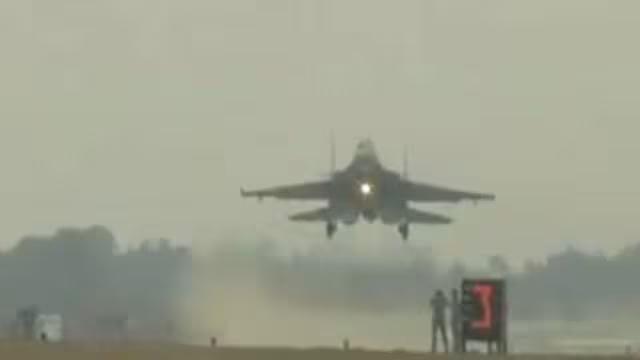
Why is IAF conducting fighter jets’ landing & take-off drill at Ganga Expressway in UP?
In a significant development, the Indian Air Force (IAF) recently conducted take-off and landing exercises on the Ganga Expressway in Uttar Pradesh, showcasing the expressway’s potential as an alternative runway during times of war or national emergencies. The exercise, which included fighter jets like Rafale, was a first-of-its-kind endeavor in India, with the Ganga Expressway becoming the country’s first expressway equipped to handle both day and night landings of jets.
The IAF’s decision to conduct this exercise on the Ganga Expressway has raised several questions about the strategic importance of the expressway and the IAF’s preparedness for future national security challenges. In this blog post, we will delve into the reasons behind the IAF’s decision to conduct these exercises and explore the implications of this development for India’s national security.
Why the Ganga Expressway?
The Ganga Expressway is a 340-kilometer-long expressway that connects the cities of Greater Noida in Uttar Pradesh to Lucknow, the state capital. The expressway is a vital infrastructure project that aims to reduce travel time between the two cities and improve connectivity in the region. However, the IAF has identified the Ganga Expressway as a potential alternative runway due to its strategic location and infrastructure.
The expressway’s proximity to the Indo-Nepal border and its location in a region prone to natural disasters like floods and earthquakes make it an attractive option for the IAF to use as a backup runway. In the event of a national emergency or a war, the IAF can use the Ganga Expressway as a secondary runway to ensure the safe take-off and landing of its fighter jets.
Why fighter jets?
The IAF’s decision to use fighter jets like Rafale for the exercise is significant because these jets are the backbone of India’s air power. The Rafale jets are equipped with advanced avionics and weapon systems, making them capable of conducting a variety of missions, including air-to-air combat, air-to-ground strikes, and reconnaissance.
The IAF’s use of fighter jets like Rafale on the Ganga Expressway demonstrates the air force’s commitment to maintaining its operational readiness and its ability to adapt to emerging threats. The exercise also showcases the IAF’s capability to operate from unconventional runways, which is critical in modern warfare.
Why day and night exercises?
The IAF’s decision to conduct both day and night exercises on the Ganga Expressway is significant because it demonstrates the air force’s ability to operate in a variety of environments. The IAF’s fighter jets are capable of taking off and landing in daylight and nighttime conditions, making them versatile assets that can be deployed in a range of scenarios.
The day and night exercises also highlighted the IAF’s ability to operate in low-visibility conditions, which is critical in modern warfare. The IAF’s pilots and ground crew demonstrated their capability to navigate and operate in low-visibility conditions, which is a testament to their training and expertise.
Implications for national security
The IAF’s decision to conduct take-off and landing exercises on the Ganga Expressway has significant implications for India’s national security. The exercise demonstrates the IAF’s commitment to maintaining its operational readiness and its ability to adapt to emerging threats.
The use of the Ganga Expressway as an alternative runway also highlights the IAF’s ability to operate from unconventional locations, which is critical in modern warfare. The exercise also showcases the IAF’s capability to operate in a variety of environments, including daylight and nighttime conditions.
Conclusion
In conclusion, the IAF’s decision to conduct take-off and landing exercises on the Ganga Expressway is a significant development that highlights the air force’s commitment to maintaining its operational readiness and its ability to adapt to emerging threats. The exercise demonstrates the IAF’s ability to operate from unconventional runways and its capability to operate in a variety of environments.
The use of fighter jets like Rafale on the Ganga Expressway also showcases the IAF’s versatility and its ability to operate in a range of scenarios. The exercise has significant implications for India’s national security, highlighting the IAF’s ability to respond to emerging threats and maintain its operational readiness.
News Source:






